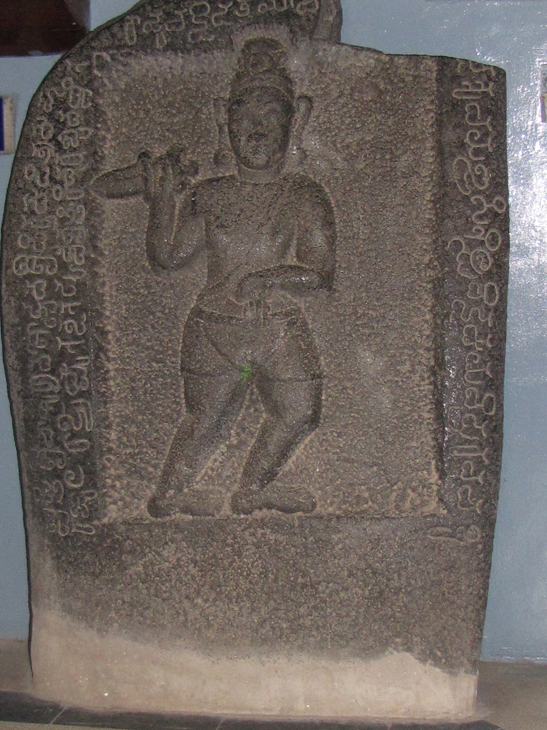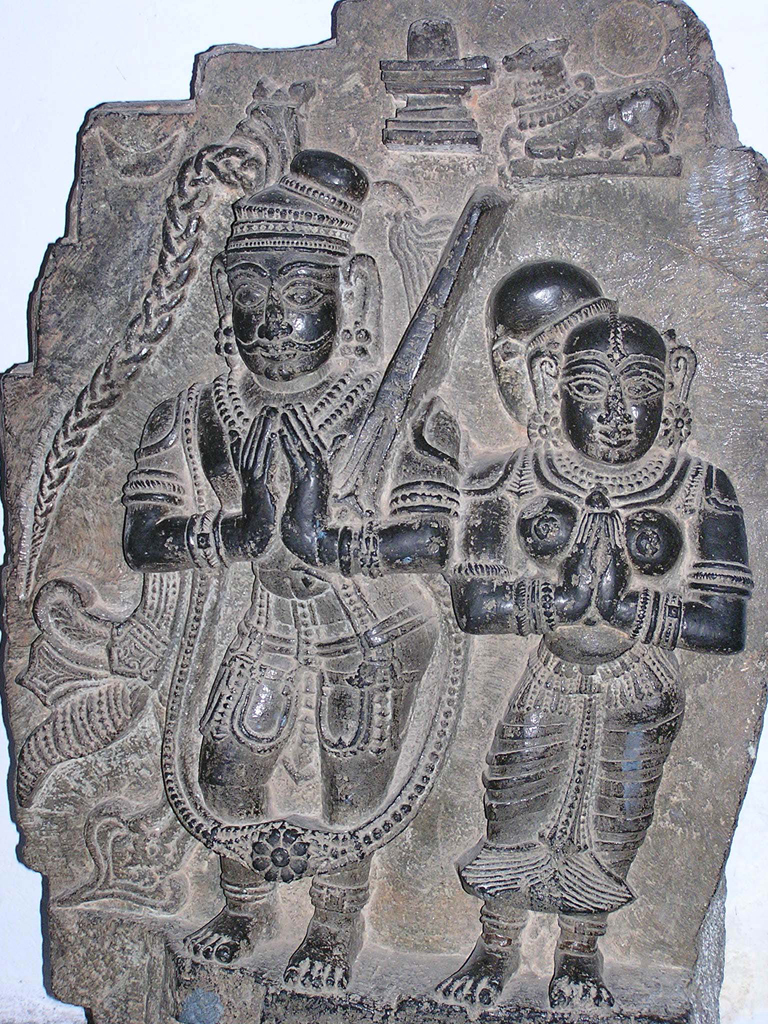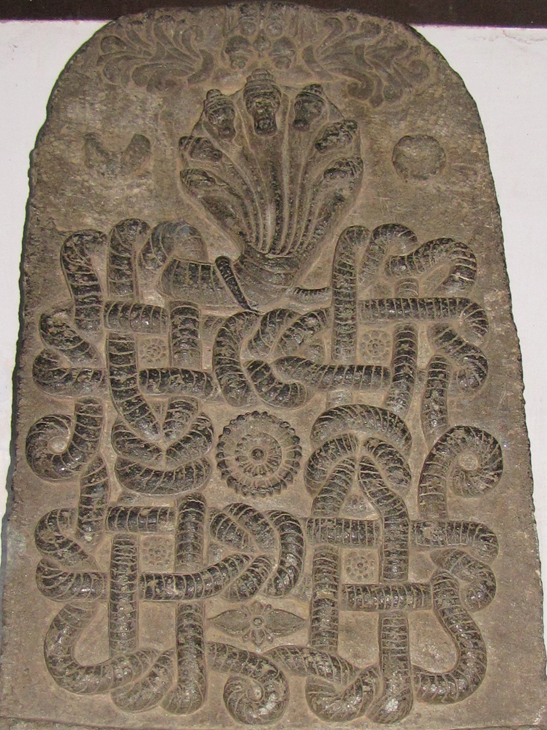
Hero stone from Nellore District.
|

Memorial stone from Kambaduru, Anantapur District
|

Nagakkal from Bellary District.
|
Visitors to the stone sculpture gallery of the Government Museum in Egmore often admire the exquisite, large images in sandstone and granite of deities of ancient and medieval times. However, they do not stop even to glance at some of the other carvings, which too are many centuries old and serve as sources of history. To this category belong the beautifully carved stone slabs known as Memorial stones, Hero stones, Sati stones and Naga stones.
Hero stones (called Viragal in Tamil), found all over India, are slabs with an image of a man, who had performed some heroic deed, carved on it to commemorate his act of valour. This hero could have participated in a war, or could have saved his village from bandits or marauding wild animals and ultimately lost his life. Most times, there will be an inscription alongside giving details of the hero. Some of the slabs are carved into horizontal sections, depicting the actual battle scene with the figure of the hero in the midst of the action. One of the several hero stones in the Museum is a slightly damaged 7th Century C.E. carving from Nellore District, Andhra Pradesh, which shows the hero holding a sword in his right hand. There are inscriptions etched around him on three sides.
Sati stones, on the other hand, are similar slabs which commemorate women who performed sati on the death of their husbands. One of the Sati stones in the Museum which belongs to the 10th Century C.E. from Penukonda in Andhra Pradesh shows only the hand, upto the elbow, of a woman who had immolated herself on the funeral pyre of her husband. In the top left hand corner of this slab is a carving of the husband and wife, while in the top right hand corner are depicted the sun and the moon to show that they would be remembered forever.
Belonging to a similar category of images are the Memorial stones erected and worshipped to commemorate the glory of ancestors or royalty. A particularly eye-catching image of the 10th Century C.E. from Kambaduru, Anantapur District, Andhra Pradesh, shows a Chola ruler and his queen who repaired a temple in Kambaduru. They are shown in a standing pose, in royal attire. Above their heads is a carving of a Siva Linga with Nandi opposite and also the sun and the moon to indicate that their glory would live forever.
Beautifully carved nagakkal, or snake stones, from Karnataka, Andhra Pradesh and Chengalpattu in Tamil Nadu are also among the important items in the Museum. One marvellous carving from Bellary District depicts two intertwined snakes, another has Balakrishna dancing on the coils of two snakes, and yet another has a Siva Linga in the centre of two intertwined serpents. There are also some Naga stones which have a half-human and a half-snake form. Other stones depict female snakes or Naginis. The worship of these Naga stones is still in vogue in many temples in India, especially in the villages, and the amazingly well-sculpted images on display were once actively worshipped. These carved stone slabs were set up in temples by childless couples who believed the cause of this was their killing of a snake in this or in a previous birth.
These beautifully handcrafted stone carvings are certainly worth viewing!
|